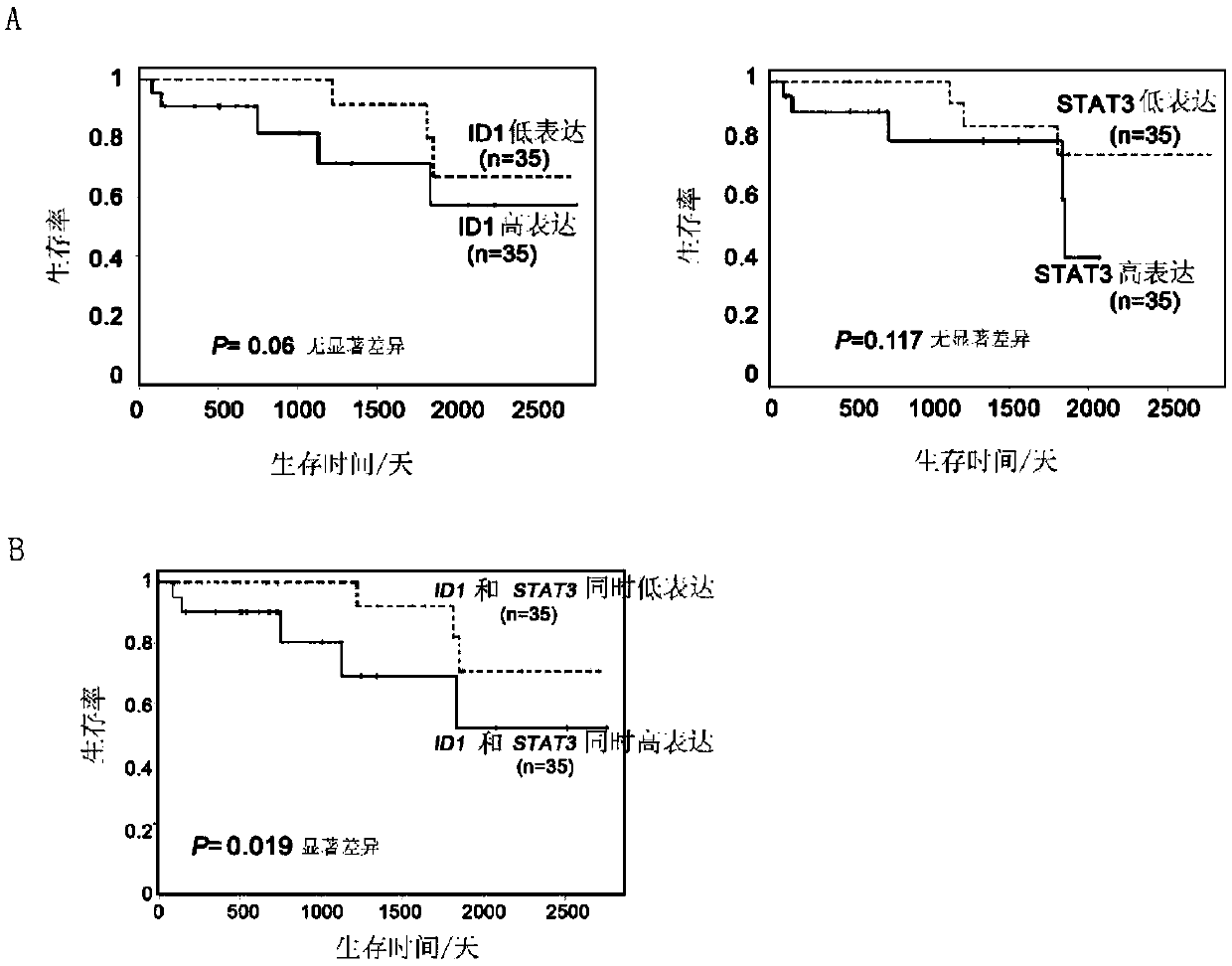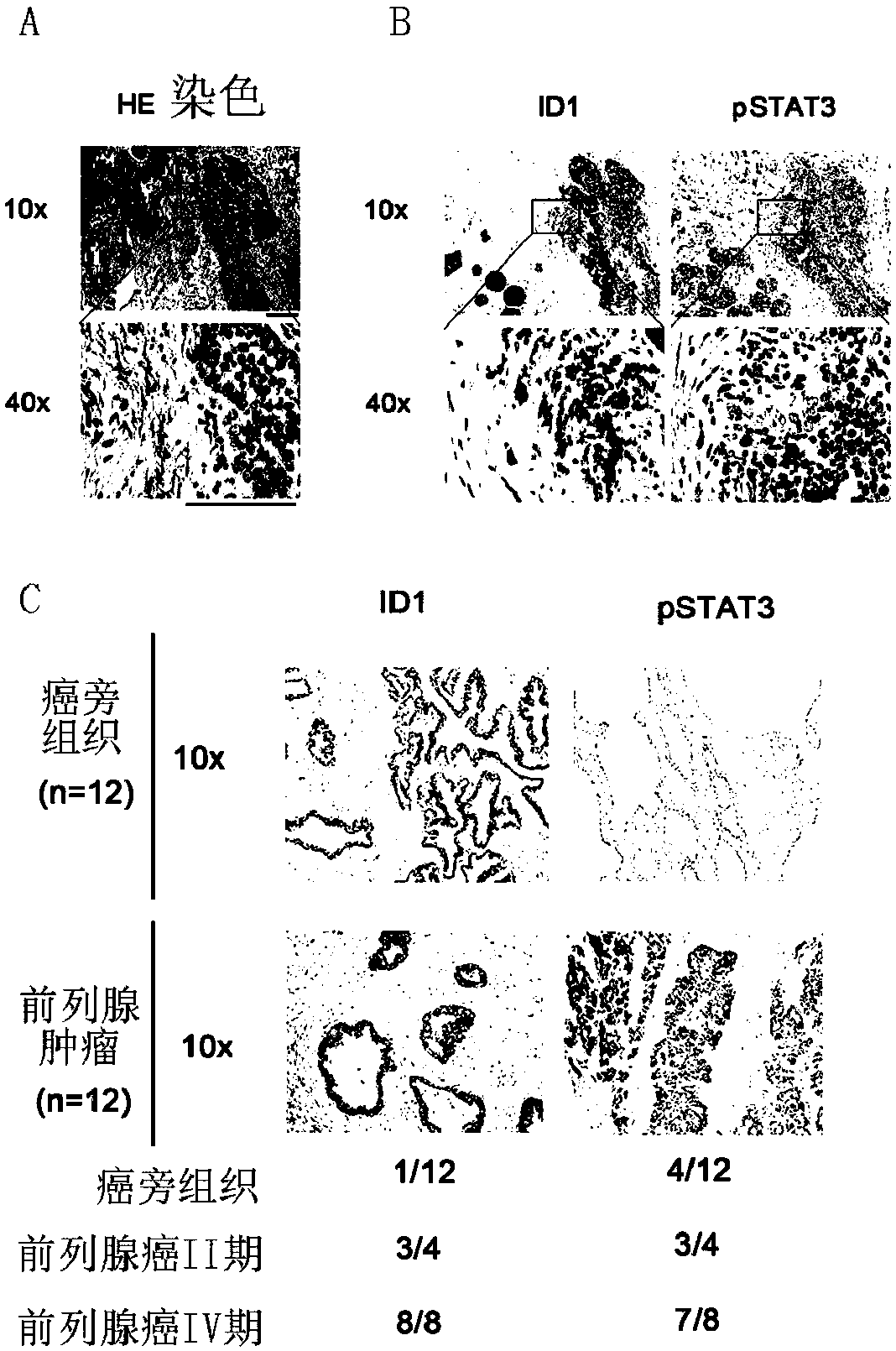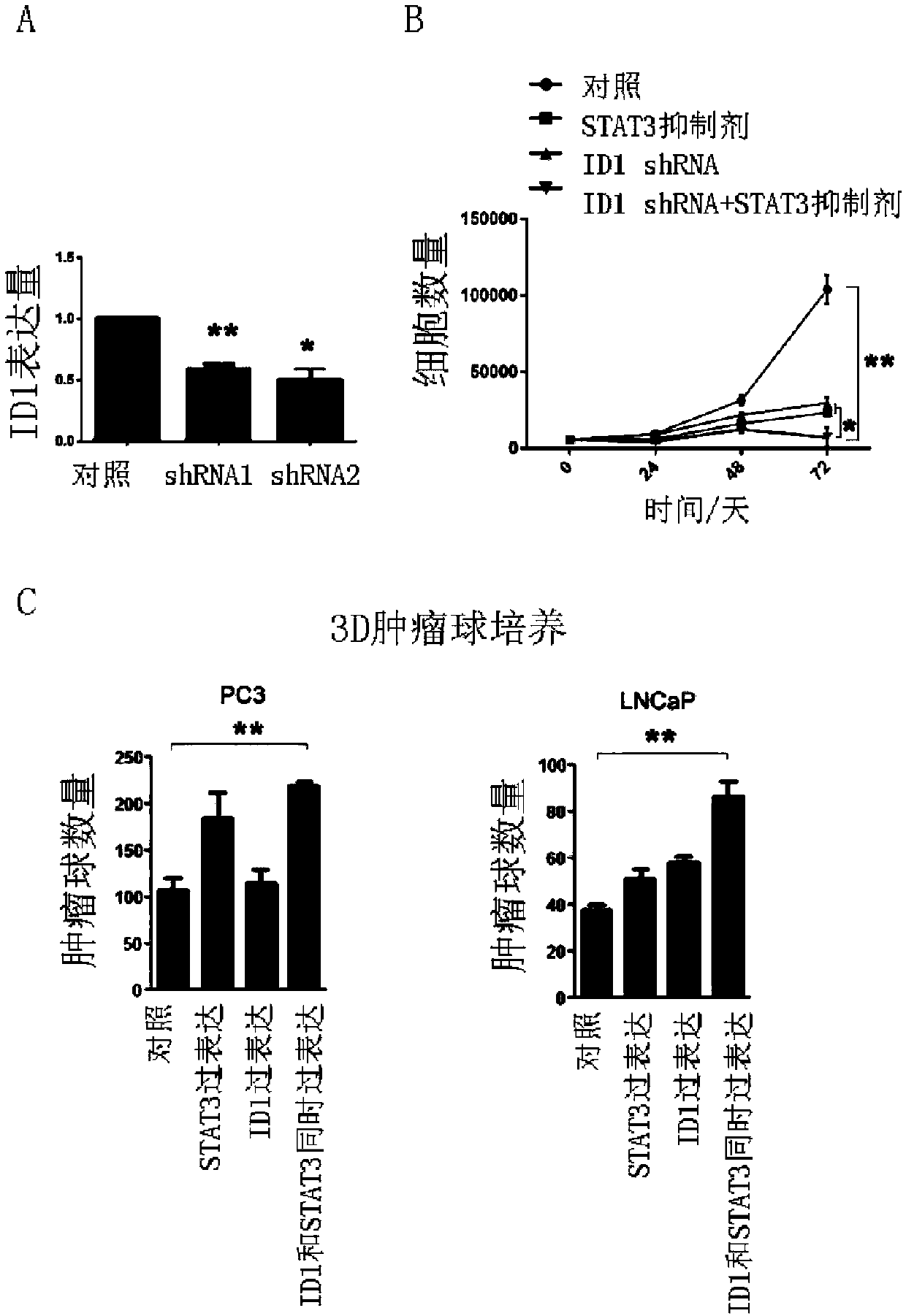Prostate cancer markers and application thereof
A technology of prostate cancer and markers, applied in the field of biomedicine
- Summary
- Abstract
- Description
- Claims
- Application Information
AI Technical Summary
Problems solved by technology
Method used
Image
Examples
Embodiment 1
[0038] Example 1: Comparing the relationship between the expression of STAT3 gene and ID1 gene in prostate cancer patients and survival rate
[0039] The Cancer Genome Atlas (TCGA) database contains multiple levels of data information for various tumor types, including: miRNA, mRNA, protein profile, mutation profile, clinical diagnosis information, etc. These data provide a rich resource for tumor data analysis. Therefore, we first analyzed the correlation between STAT3 and ID1 genes and cancer with the help of TCGA database.
[0040] (1) 70 prostate cancer patients were randomly selected from the database, and the prostate tissue of the patients had been detected by RNA-seq to detect the expression level of the whole gene.
[0041] (2) According to the detected expression level of ID1 gene, the patients were divided into two groups with low expression of ID1 and high expression of ID1, 35 people in each group, and the five-year survival rate was compared. and verify whether...
Embodiment 2
[0045] Example 2: Using immunohistochemical staining to compare the differences in the expression of STAT3 and ID1 genes between tumor tissue and normal tissue Materials and methods:
[0046] (1) 12 tumor tissues of prostate cancer patients (including 4 in stage II and 8 in stage IV) were randomly selected, and the tissues of prostate cancer patients were taken to be paraffin-embedded and sectioned for HE staining.
[0047] (2) Prostate cancer patients were randomly selected, and the tissues of the prostate cancer patients were taken for paraffin-embedded sectioning, and immunohistochemical staining for STAT3 and ID1 were performed respectively.
[0048] (3) Randomly select patients with stage II prostate cancer and stage IV prostate cancer, take their tissues for paraffin-embedded sections (including tumor sites and adjacent tissues), and use STAT3 phosphorylation antibody (purchased from Cell Signaling Technology Company, product number 9145) ) and ID1 antibody (purchased fr...
Embodiment 3
[0050] Example 3: Using gene knockout and protein activity inhibitors to compare the effects of different STAT3 and ID1 expression levels on cell proliferation Materials and methods:
[0051] (1) Two different shRNAs (purchased from the Open Biosystems shRNA library of GE Dharmacon, shRNA1 product number V3LMM_519695, shRNA2 product number V3LMM_519694) were used to knock down the ID1 gene, and the degree of down-regulation of ID1 expression in the two cases was compared, and knockdown was selected. The shRNA with better effect was used for subsequent experiments.
[0052] (2), the prostate epithelial cell line TRAMP-C3 (ATCC number CRL-2732 TM , mouse origin, epithelioid adherent growth) cells were divided into four groups, group I was the control group without gene knockdown and inhibitors; group II added STAT3 protein activity inhibitor (SH-4-54, purchased from MCE company, Cat. No. HY-16975); Group III is the ID1 gene knockdown group; Group IV undergoes STAT3 expression i...
PUM
 Login to View More
Login to View More Abstract
Description
Claims
Application Information
 Login to View More
Login to View More - R&D Engineer
- R&D Manager
- IP Professional
- Industry Leading Data Capabilities
- Powerful AI technology
- Patent DNA Extraction
Browse by: Latest US Patents, China's latest patents, Technical Efficacy Thesaurus, Application Domain, Technology Topic, Popular Technical Reports.
© 2024 PatSnap. All rights reserved.Legal|Privacy policy|Modern Slavery Act Transparency Statement|Sitemap|About US| Contact US: help@patsnap.com










